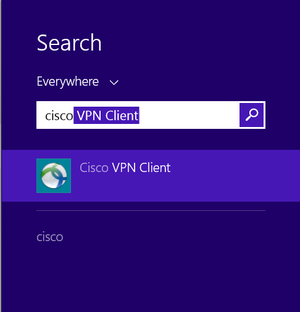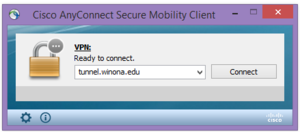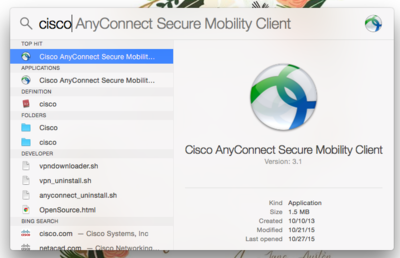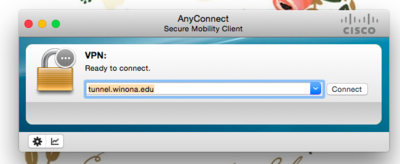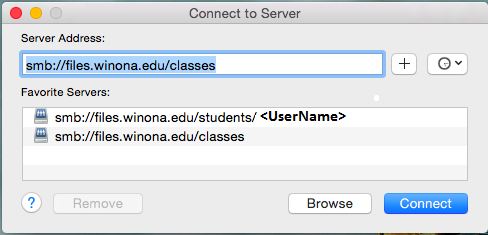VPN
About this Article
VPN stands for Virtual Private Network. It is used to connect to the WSU network when you are off-campus. Students and Employees can use this software. Only WSU laptops can run this software.
Cisco AnyConnect VPN client
Using the Cisco AnyConnect VPN client software, you can connect a WSU laptop to the WSU network from off campus. This software is already installed on all WSU laptops. A VPN connection enables you to access select network resources as if you were on campus connected to our network directly. The data is encrypted to preserve security. This includes:
- Network storage drives (e.g., personal, class, departmental) Note: See instructions below to Map Network Drives
- KeyServer applications (e.g., Adobe Photoshop, Adobe Acrobat) These applications will require VPN to run off campus.
Watch the video!
Find the Cisco AnyConnect VPN software on Your WSU Laptop
On a PC (Windows 8.1)
- From the Windows Start Screen
- Search "Cisco"
- Select "Cisco VPN Client"
- Choose Connect in the menu below:
- Use your full WSU email address when prompted to login
On a PC (Windows 7)
- Go to your Start Menu
 (lower-left part of your desktop).
(lower-left part of your desktop). - Search for "Cisco" in the search bar.
- Run Cisco AnyConnect.
On a Mac
- Click on Spotlight in the upper right corner
- Type in "Cisco"
- Select "Cisco AnyConnect Secure Mobility Client"
- Connect to Tunnel.winona.edu
- Use your full WSU email address when prompted to login
Map Network Drives
If you want to connect to Personal Network or Department Network drives from off-campus, you will need to VPN and Map Network drives to access them.
- First Use instructions above to VPN
Windows 7 PC or VMware Fusion
- Windows 7 PC users need to run the shortcut from the start menu
 click, Click_to_map_drives
click, Click_to_map_drives 
- Access your network drives by accessing my computer.
Windows 8.1 PC
- Go to Start Screen and select the Tile Map Network Drive
- A script window will appear and your drives will be mapped
- Go to This PC to see the network drives mapped from the start menu (See Fig 1.)
Mac
- In Finder, hold down <CommandKey> then hit the <K> key to bring up "Connect to Server"
- Mac users connect to one of the network locations listed in the Fig 2.
